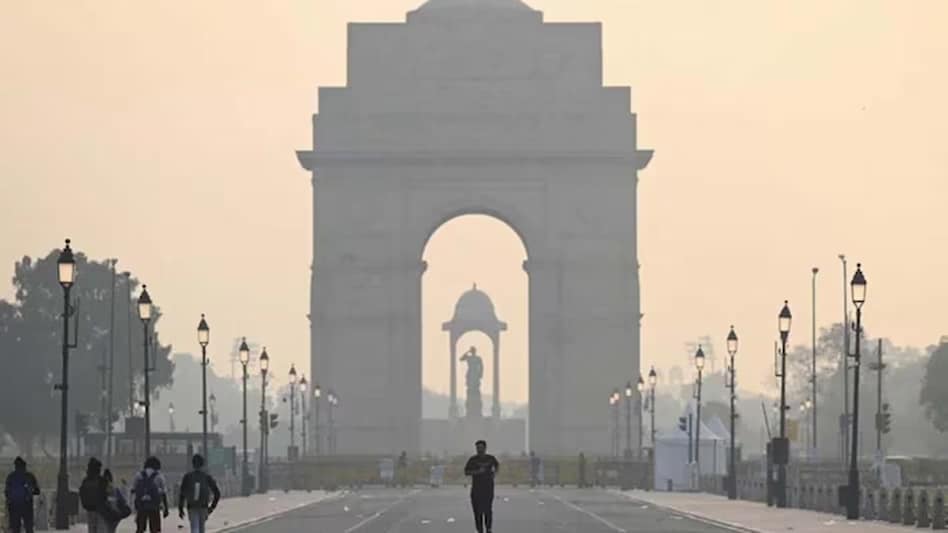 Under Stage II of GRAP, significant restrictions are placed on construction and demolition activities, along with many restrictions on traffic movement.
Under Stage II of GRAP, significant restrictions are placed on construction and demolition activities, along with many restrictions on traffic movement. Under Stage II of GRAP, significant restrictions are placed on construction and demolition activities, along with many restrictions on traffic movement.
Under Stage II of GRAP, significant restrictions are placed on construction and demolition activities, along with many restrictions on traffic movement.The Commission for Air Quality Management (CAQM) has mandated the implementation of Stage II of the Graded Response Action Plan (GRAP) in Delhi-NCR, effective from October 22, 2024, in response to worsening air quality. This move comes as pollution levels in the region have escalated, particularly during the winter months when smog blankets the city. GRAP-II is part of a broader strategy aimed at preventing further degradation of air quality and includes a series of stringent measures targeting pollution from various sources.
Under Stage II of GRAP, significant restrictions are placed on construction and demolition activities. Large construction sites must implement dust control measures, such as covering materials and using anti-smog guns. Non-essential construction activities like excavation are also discouraged to curb the dust that contributes significantly to air pollution. The industrial sector is also affected by these measures, with industries, especially those relying on combustion processes, required to switch to cleaner fuels. The use of coal and firewood in commercial settings, including hotels and restaurants, is prohibited.
Vehicular pollution is another major concern under GRAP-II. According to the plan, there are restrictions on heavy goods vehicles entering Delhi unless they are carrying essential commodities. Public transportation is promoted as an alternative to private vehicles, with stricter enforcement of pollution control checks. Authorities have also been tasked with intensifying road cleaning efforts, particularly in areas prone to high dust levels. Water sprinkling and mechanized sweeping are employed to settle dust and reduce its contribution to the already poor air quality.
The open burning of waste, a common practice that exacerbates air pollution, is strictly banned under GRAP-II. Enforcement teams monitor compliance, and violators face fines. Power plants, particularly older coal-based thermal plants, face operational restrictions, with many being forced to reduce capacity or shut down temporarily to lower emissions. The plan also emphasizes better traffic management to reduce congestion, thereby cutting down on vehicular emissions.
This decision to enforce GRAP-II comes at a time when Delhi and its surrounding areas are grappling with deteriorating air quality. Monitoring stations across the capital have reported Air Quality Index (AQI) levels between 201 and 300, categorized as "Poor," and above 300, categorized as "Very Poor." Areas like Anand Vihar, Mother Dairy Plant, ITO, and ITI Shahdara are among the worst affected, with AQI readings falling into the "Unhealthy" to "Very Unhealthy" categories.
The CAQM has urged residents to minimize the use of personal vehicles, encouraging the use of public transportation instead. Citizens have also been advised to use technology to navigate less congested routes and reduce outdoor activities during peak pollution hours. The commission has recommended that people regularly replace air filters in their vehicles and avoid dust-generating construction activities during the high-pollution months of October to January.
GRAP, first introduced in 2017, is a dynamic response system that triggers specific actions based on the Air Quality Index. Stage II of the plan targets pollution levels classified as "Poor" to "Very Poor," and is part of a four-stage framework designed to combat air pollution in Delhi-NCR. The stages escalate in severity, with Stage IV addressing the most extreme levels of pollution. This year, the enforcement of GRAP-II is seen as crucial in mitigating the annual spike in air pollution that typically follows the Diwali festival and is compounded by crop stubble burning in nearby states.
Experts like Dr. Rajesh Chawla, a senior consultant at Indraprastha Apollo Hospital's critical care department for respiratory diseases, have expressed concern over the rising levels of pollution, noting a significant increase in patients suffering from respiratory problems. According to Dr. Chawla, the number of patients experiencing respiratory issues has risen by nearly 10 to 15 percent, highlighting the urgent need for measures like GRAP-II to curb the city's worsening air quality.
The CAQM’s order underscores the importance of collective action and urges all agencies and citizens in Delhi-NCR to contribute to the effort to improve air quality. The situation remains critical, and the success of GRAP-II will depend on the coordinated efforts of government agencies, industries, and residents alike to reduce pollution levels and protect public health.